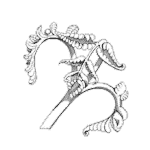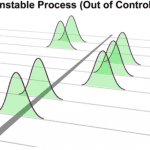
What is numerical optimization? What are the limits of the approach? It can be used while trying to obtain robust design, but constraints need to be understood. [Read more…]
Your Reliability Engineering Professional Development Site
A listing in reverse chronological order of articles by:
by Perry Parendo Leave a Comment

What is numerical optimization? What are the limits of the approach? It can be used while trying to obtain robust design, but constraints need to be understood. [Read more…]
by Perry Parendo Leave a Comment

Tom Izzo has often talked about the difference between winning games and winning championships. Observing him, I believe I understand his comment better now. [Read more…]
by Perry Parendo Leave a Comment

Have you considered understanding your design better to eliminate service calls? An example of an organization that did this – powerful results. “Return to original factory settings and call back if that does not resolve it.” No calls for years! [Read more…]

When creating a robust design, there is probably no more important consideration than identifying the correct parameters and associated values. A robust design is insensitive to anticipated variation and P-Diagram visually shows the relationship between what the system is designed to do, the anticipated noises the system will encounter and the correct parameters to achieve the desired outcome. P-Diagram can be an essential input to FMEA.
“Concern for man and his fate must always form the chief interest of all technical endeavors. Never forget this in the midst of your diagrams and equations.” Albert Einstein
by Perry Parendo Leave a Comment

Everyone wants excellence and continuous improvement, but what does optimization mean? And how do you get there? This video covers two basic optimization methods and how we blend them for Robust Design. [Read more…]
by Perry Parendo Leave a Comment

Coach Dean Smith always used this phrase with his teams and his teaching. It is how I focus my coaching, but also how I consider New Product Development. Would this mix be valuable for your organization and your career? [Read more…]
by Dennis Craggs Leave a Comment

Most of us rely on accurate measurements. If these measurements are unreliable, then our decisions could be based on false information. How can we have confidence in our measurements?
The purpose of a measurement system analysis is to determine if a gauge is fit for use. This means that we can rely upon the measurements to give us a true indication of the parameter being measured. Our decisions will not be affected by erroneous data. So how can we know the quality of our measurements?
[Read more…]
by Perry Parendo Leave a Comment

Case studies always have good endings – but this one was not looking good. With some insights, we found an unexpected issue. This provided an important answer for a struggling manufacturing process. [Read more…]
by Perry Parendo Leave a Comment

Requirements for the typical company have few guidelines. This video gives an outline for what we have experience in industry and in our consulting experiences. It is essential for success. We can help you get there. [Read more…]
by Carl S. Carlson Leave a Comment

Once you have identified the scope of the FMEA project, made the scope visible, it is time identify the FMEA team members. This article discusses the composition of the FMEA team, including why each member is needed, and the underlying reason for a cross-functional team.
“Alone we can do so little; together we can do so much.” Helen Keller
by Perry Parendo Leave a Comment

In sports, people talk about a go to guy or a go to play. What about in business or new product development? Where do you go during critical times? We find companies calling us to resolve those items. [Read more…]

When it is necessary to check 100% of parts for one or more characteristic?
There are situations where 100% of manufactured parts are checked. These include visual inspection, measurements of a part characteristic, and a reaction to low process capability. These may be accomplished manually or an automated process.
[Read more…]
by Perry Parendo Leave a Comment

What people need are practical business solutions. They do not need science projects – or efforts only for the sake of learning. [Read more…]
by Carl S. Carlson Leave a Comment

FMEA teams should agree to the ground rules that guide the analysis and the underlying assumptions that impact the entire FMEA. Failure to do so will add complexity and confusion to the resulting FMEA, and waste people’s time. Don’t miss this important step in FMEA preparation.
“Your assumptions are your windows on the world. Scrub them off every once in a while, or the light won’t come in.” Isaac Asimov
by Perry Parendo Leave a Comment

In sports, the mantra of “Respect all but fear none” is used by many coaches. This same philosophy is appropriate for New Product Development. Respect the design or process – nothing is simple. Yet, do not fear new things. A healthy respect for trying new things. This is how we coach and how we consult! [Read more…]
 Ask a question or send along a comment.
Please login to view and use the contact form.
Ask a question or send along a comment.
Please login to view and use the contact form.